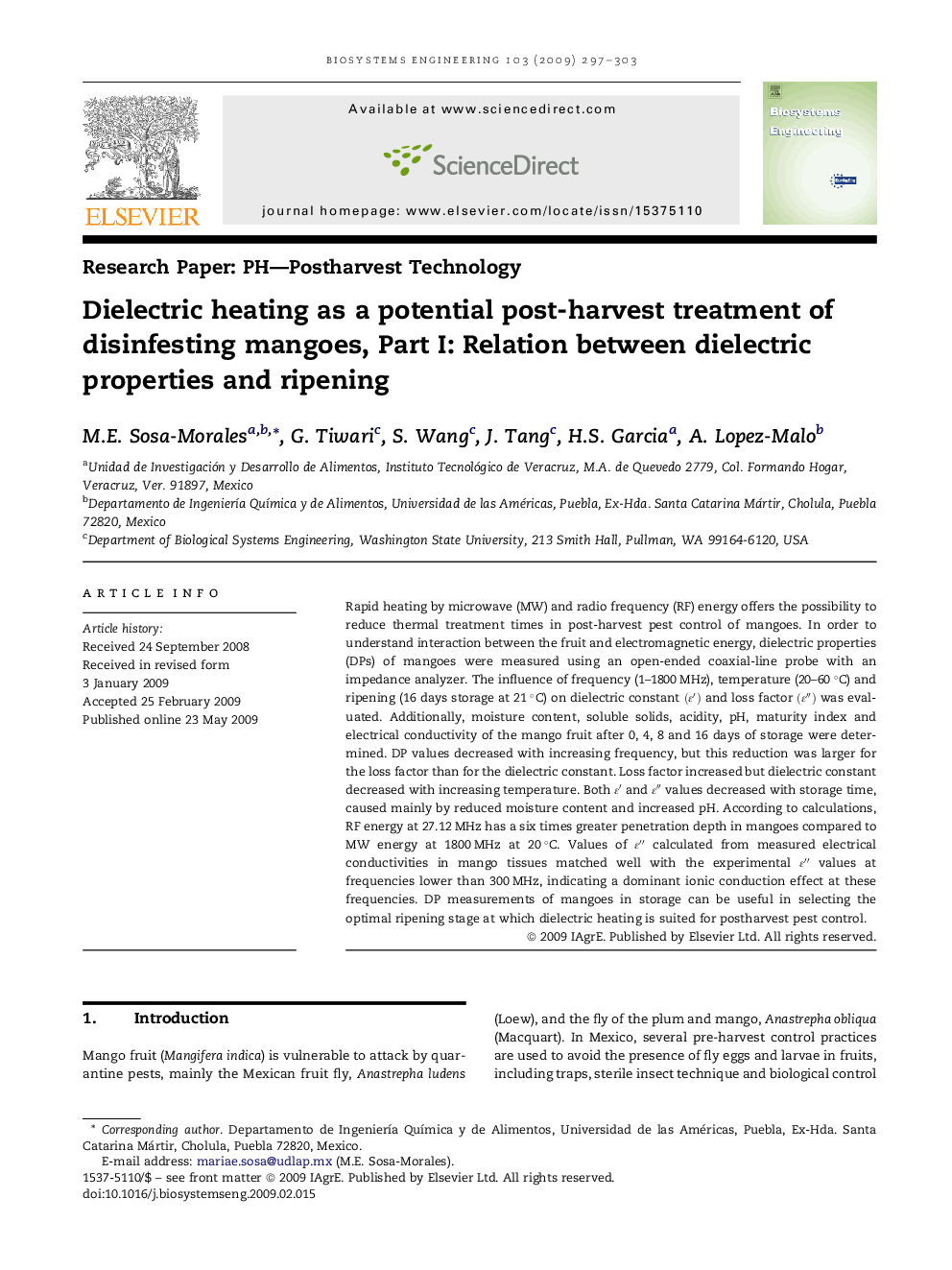| Article ID | Journal | Published Year | Pages | File Type |
|---|---|---|---|---|
| 1711924 | Biosystems Engineering | 2009 | 7 Pages |
Rapid heating by microwave (MW) and radio frequency (RF) energy offers the possibility to reduce thermal treatment times in post-harvest pest control of mangoes. In order to understand interaction between the fruit and electromagnetic energy, dielectric properties (DPs) of mangoes were measured using an open-ended coaxial-line probe with an impedance analyzer. The influence of frequency (1–1800 MHz), temperature (20–60 °C) and ripening (16 days storage at 21 °C) on dielectric constant (ɛ′)(ɛ′) and loss factor (ɛ″)(ɛ″) was evaluated. Additionally, moisture content, soluble solids, acidity, pH, maturity index and electrical conductivity of the mango fruit after 0, 4, 8 and 16 days of storage were determined. DP values decreased with increasing frequency, but this reduction was larger for the loss factor than for the dielectric constant. Loss factor increased but dielectric constant decreased with increasing temperature. Both ɛ′ɛ′ and ɛ″ɛ″ values decreased with storage time, caused mainly by reduced moisture content and increased pH. According to calculations, RF energy at 27.12 MHz has a six times greater penetration depth in mangoes compared to MW energy at 1800 MHz at 20 °C. Values of ɛ″ɛ″ calculated from measured electrical conductivities in mango tissues matched well with the experimental ɛ″ɛ″ values at frequencies lower than 300 MHz, indicating a dominant ionic conduction effect at these frequencies. DP measurements of mangoes in storage can be useful in selecting the optimal ripening stage at which dielectric heating is suited for postharvest pest control.
